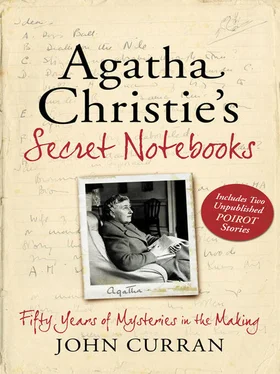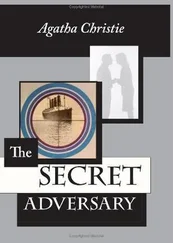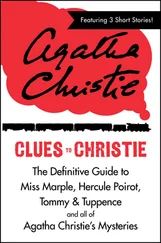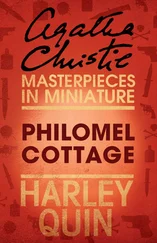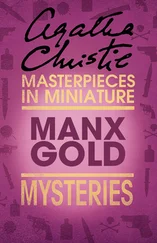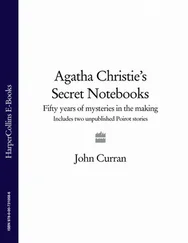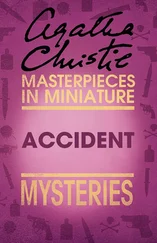Mary—Tenement in New York—hatred of it all—mother out in street—car passed—Mrs A—adoption—then hotel life—nursery growing up—plans for her—meeting with Philip—no background—goes off marries him—he sets up in business—Fails—then polio—Mrs. Argyle—wants them there—he is quite ready to go—goes into hospital—Mary goes to stay at Sunny Point
The two subsequent victims are also considered. As the notes below show, however, the original intention was that either Philip or Tina would be the victim:
Who is killed? Philip poisoned—doesn’t wake up or Tina stabbed—she walks from Kirsty to Mickey—collapses
The poisoning of Philip was discarded in favour of stabbing. In view of the urgency of the killer’s situation, this was a more expedient course and one easily within the capability of the character in question. And a possible reason for inclusion of the unsuccessful attempt on Tina is that it provides a witness in the absence of any other proof of guilt. For those readers who doubt the medical possibility of the attempted murder of Tina, who continues to walk despite having been stabbed, there are two editions of the British Medical Journal, dated 28 January and 18 February 1956, among Christie’s papers with pages dealing with just this type of event. And both articles are marked. A careful reading of a very daring Chapter 22 should be enough to dispose of any accusations of cheating.
There were also a few ideas that never got further than Notebook 28:
Forged will—forged in favour of real murderer—but forged very badly? Or forged badly in favour of Albert.
Husband dislikes wife and hated the children. Wanted to marry someone? Or had son of his own.
She was going to alter will in favour of a foundation for orphans—which cut out husband.
And, finally, two intriguing ideas, both actually variations on the same theme…
Or was Albert her [i.e. Mrs Argyle’s] son
Is Kirsten Albert’s real mother?
Both of these would have worked and would, moreover, have made psychological sense. The former would have made a profoundly affecting scenario; the latter would perhaps have been more effective as a motivation for Kirsten (as it did for her counterpart in ‘Sing a Song of Sixpence’) than the one actually used. However, the possibilities of unacknowledged parenthood as a plot device and a motivation are fully explored in Hercule Poirot’s Christmas, Sad Cypress, Mrs McGinty’s Dead and ‘Dead Man’s Mirror’ among others, so perhaps it was simply a case of avoiding repetition.
Sleeping Murder 11 October 1976
Gwenda Reed’s new house evokes disturbing memories and her attendance at a performance of The Duchess of Malfi confirms her suspicions that, as a child, she witnessed a murder there. Miss Marple’s advice to let sleeping murder lie is ignored and a murderer prepares to kill again.
Although published ten months after Christie’s death, Sleeping Murder was written during the Second World War and, like Curtain, placed in safekeeping to appear only after its author’s death. Or so, until the discovery of the Notebooks, we thought…
Notes relating to the development of Sleeping Murder appear in Notebooks 17, 19, 33, 44, 63 and 66, an indication of its convoluted genesis: it underwent two changes (at least) of title and its history is linked with Taken at the Flood (see Chapter 12), which in turn is linked with They Do It with Mirrors. The Notebooks also show that at various times it was to involve the motif from the Mr Quin story ‘The Dead Harlequin’ of a person looking down at a dead body on the floor; it could have been a Poirot title and, even more amazingly, a Tommy and Tuppence novel. And despite the assertion that it was written during the Blitz, the Notebooks reveal a very different timescale for its creation.
The first page of Notebook 19 is headed:
Cover Her Face
The Late Mrs. Dane
They Do It with Mirrors
The promising title ‘The Late Mrs. Dane’ was not pursued although the name appears in the early sketches for Sad Cypress and The A.B.C. Murders. Cover Her Face, meanwhile, was the one-time title for Sleeping Murder. It was originally called Murder in Retrospect, as it appears on one of the surviving typescripts; and as Chapter 5 of the novel asserts. Then the American publishers of Five Little Pigs appropriated this title in 1942, so the stored manuscript was renamed Cover Her Face. All was well until P.D. James used the latter title in 1964 for her first detective novel. Agatha Christie herself, in a 1972 letter to her agent, suggested She Died Young. Eventually the final Miss Marple novel to appear in print was published in 1976 as Sleeping Murder. But, as can be recognised from the details in the following extract—the familiar house, the wallpaper, the door—the title Cover Her Face appears frequently in the Notebooks in connection with Sleeping Murder.
Cover her Face
The House—recognition—door—Staircase etc. Poirot and girl at Duchess of M—her story
Cover her Face
…in the train—then the house—feeling of knowing it—the wall paper in this room—(inside closet)—the door but it was the door that really shook her
The complex history of this novel is best exemplified by a brief quotation from Notebook 63:
Helen—Start with the house and the girl and Tuppence (?) or friend—Raymond West and wife—the things happening one by one—then the theatre—Malfi—a T and T story? A Miss M story? An HP story?
Helen Rendall—suicide—hanged herself—her husband sold the house and went abroad.
Now who killed her?—Her brother—eminent surgeon—Doctor?—Husband? shell-shocked—girl’s husband? H is P’s second wife—young, flighty—a lover—Fergus—chauffeur or lover
The only real certainty in all of this plotting is a girl buying a house that contains memories from her earlier life, and we can see from the above extract that Christie was undecided as to whose case this was to be—Miss Marple, Poirot, even Tommy and Tuppence! Apart from that, there was no clear idea of how to proceed; and, presumably, depending on the detective she chose, a different book and possibly a different plot would have followed. This vacillation about the detective also raises questions about the book being written specifically as Miss Marple’s last case; if it was created as her final investigation Miss Marple would have been a given from the start.
Notebook 17 has a clear outline of the plot as far as the first four chapters. The heroine’s name, later to change to Gwenda, is here Gilda, although her husband’s remains the same:
Gilda—young married woman arriving Plymouth or Southampton—feels ill—stays night then hires car—drives slowly through Southern England. Feeling of coming home—evening—down into the valley—board up—visit to house agent—(former owners?). She buys it—writes letter to husband (or takes it furnished? unfurnished?) Incidents—the path—the door—the wallpaper—sends telegram to London—to Giles aunt Miss M?—or to Giles cousin Miss M is her aunt—or to the Crests—theatre—some young people—etc.—Cover her face—she rushes out and home. Joan asks her—Miss M. comes up with hot water bottles and hot coffee and sugar. The next morning…Gilda tells her all about it—Helen etc.
Notebook 66 begins as Notebook 17 but then diverges briefly to a different idea before returning to the Duchess of Malfi theme. Also included in this jotting is the notion of a father in a mental hospital for a murder he may or may not have committed, an idea which appears in Sleeping Murder.
Читать дальше
Конец ознакомительного отрывка
Купить книгу
